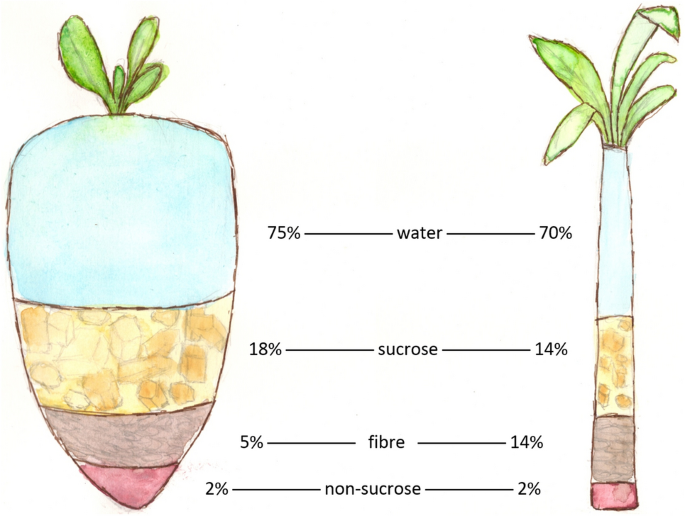The refining process of beet sugar vs cane sugar varies, affecting the final product’s appearance.
The refining process of beet sugar vs cane sugar varies, affecting the final product’s appearance.
Blog Article
Discover the Uses and Perks of Beet Sugar Vs Cane Sugar in Your Daily Diet
Discovering the distinct qualities of beet and cane sugar discloses greater than simply their sweetening capabilities; it highlights their special influence on health and wellness and cookeries. Beet sugar, known for its refined taste, is usually preferred in fragile desserts, whereas cane sugar, with its tip of molasses, adds splendor to robust recipes. Each type holds its own dietary account and glycemic implications, welcoming a much deeper understanding of their roles in a well balanced diet plan and lasting consumption practices.
Beginning and Manufacturing Procedures of Beet and Cane Sugar
The unique environments and dirt kinds needed for growing sugar beets and sugarcane add to distinctions in their farming practices and geographic distribution, affecting the economics and sustainability of their production. beet sugar vs cane sugar.
Nutritional Contrast In Between Beet Sugar and Cane Sugar
Regardless of stemming from various plants, beet sugar and cane sugar are nutritionally very similar, both mainly containing sucrose. Each gives concerning 4 calories per gram, converting to roughly 16 calories per teaspoon. Structurally, both sugars are composed of roughly 99.95% sucrose, with very little quantities of various other substances like wetness and trace element, which do not significantly alter their nutritional profiles.

Inevitably, when picking between beet sugar and cane sugar based on nutritional content alone, both offer identical benefits and disadvantages as they are essentially types of the same molecule-- sucrose, offering quick energy without other nutrients.
Effect on Health And Wellness: Glycemic Index and Caloric Content
Exploring additionally right into the impacts of beet sugar and cane sugar on health, it is essential to consider their glycemic index and calorie web content. Both sugars are categorized as sucrose, which consists of sugar and fructose. This structure leads them to have a similar effect on blood sugar levels. The glycemic index (GI) of both beet and cane sugar is around 65, classifying them as high-GI foods, which can cause quick spikes in blood sugar degrees. This is an essential element for individuals managing diabetes or those attempting to stabilize their power levels throughout the day.
Each kind of sugar has about 4 calories per gram, making their calorie content matching. For those keeping an eye on caloric consumption, especially when handling weight or metabolic health conditions, recognizing this equivalence is crucial (beet sugar vs cane sugar). Excessive intake of any high-calorie, high-GI food can contribute to health and wellness concerns such as excessive weight, heart disease, and insulin resistance.
Environmental and Economic Considerations of Sugar Manufacturing
Beyond wellness impacts, the manufacturing of beet and cane sugar also raises significant ecological and financial problems. Sugar beet farming often tends to need cooler environments and has linked here a lower geographical footprint compared to sugar cane, which flourishes in tropical regions.
Additionally, using pesticides and fertilizers in both beet and cane sugar growing can result in soil degradation and contamination, further impacting biodiversity and local water bodies (beet sugar vs cane sugar). The selection in between cultivating sugar beet or cane frequently rests on regional ecological problems and economic aspects, making the sustainability of sugar production an intricate problem
Culinary Applications and Taste Differences
While the environmental and financial aspects of sugar manufacturing are undoubtedly significant, the selection between beet and cane sugar additionally influences cooking applications and flavor accounts. Beet sugar, derived from the sugar beet plant, is recognized for its incredibly neutral my sources preference.
Walking cane sugar, removed from sugarcane, often keeps molasses traces, which impart a distinctive richness and depth. The minor variant in wetness web content in between beet and cane sugar can influence the texture and consistency of dishes, making cane sugar a favored selection for particular recipes that benefit from its distinct residential properties.

Final Thought
Finally, both beet and cane sugar have distinctive beginnings and manufacturing procedures, providing similar nutritional accounts with minor differences in sodium content and taste. While their influence on wellness, especially relating to glycemic index and calories, is comparable, the choice in between them commonly boils down to environmental, financial aspects, and details culinary demands. Recognizing these elements can direct consumers in making notified decisions that align with their health and wellness goals and taste preferences.
Report this page